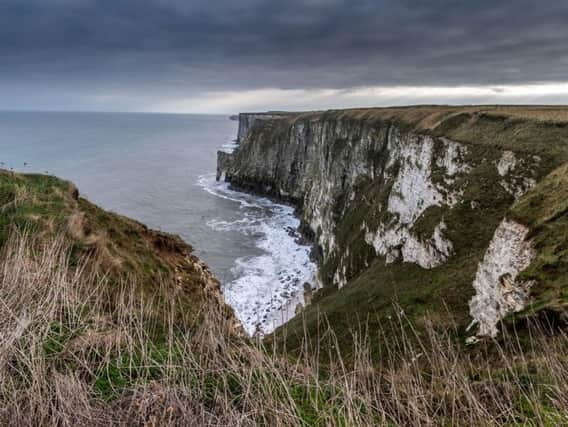Scarborough Coastguard give cliff safety advice after heavy rainfall


Periods of intense rainfall followed by dryer warmer weather can make cliff edges more vulnerable.
Cliffs in the UK are continually eroding, with pieces falling that can be a few small rocks or as large as a car.
Advertisement
Hide AdAdvertisement
Hide AdOn Wednesday there was a land slip in Norfolk but Scarborough and Burniston Coastguard have said a similar situation could easily happen in Yorkshire.
HM Coastguard say it is "impossible to predict" when pieces of cliffs will fall or how big they will be and so ask the public to take extra care.
They said: "We’ve seen a number of cliff collapses around the UK coastline in recent months. It’s clear that cliffs are very unstable in places and we really can’t stress enough how important it is to keep back from the edge.
"There is no ‘safe’ place to be. Some of the cracks that have appeared have been several feet away from the edge."
Advertisement
Hide AdAdvertisement
Hide AdHM Coastguard also warned selfie culture is creating problems on the cliffs.
They added: "Don’t be tempted to go and investigate and don’t risk going to the edge to get a dramatic picture.
"One of our biggest problems is tackling the ‘selfie culture’ where people take risks to get a dramatic photograph of themselves on a dangerous cliff edge or during a tidal surge – no selfie or photograph is worth risking your life for.
"Remember to call 999 and ask for the Coastguard if you see anyone in difficulty or get into trouble yourself."
Advertisement
Hide AdAdvertisement
Hide AdScarborough and Burniston Coastguard have shared advice on keeping safe when walking near the base of cliffs of on cliff top paths.
Coastguard's safety tips
- Make sure that you are properly equipped for walking along coastal paths - wear sturdy shoes or boots.
- Check the weather forecast and tidal times before you set out.
- Carry a fully charged mobile phone, and tell someone where you are going and what time you will be home.
Advertisement
Hide AdAdvertisement
Hide Ad- Only use the designated paths, take notice of any warning signs and fences in place, be responsible and don’t take an unnecessary risks.
- Try and keep your dog on a lead near cliffs. If your dog does fall down a cliff or starts getting swept out to sea, do not attempt to rescue it. Dogs will often get themselves back to shore and coastguards are trained in dog rescues.
- Do not attempt to climb up or down cliffs unless you are properly equipped and trained to do so and do not attempt to climb cliffs as a short cut back to the top and again.
- When standing at the bottom of a cliff, we would always advise people that they shouldn’t stand less than the height of the cliff away. That means that if the cliff is 25 metres high, don’t go closer than 25 metres towards it.